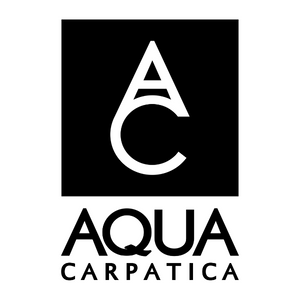Laurent Delaunay, IWC Red Winemaker of the Year 2024, is outlining his winemaking philosophy before delving into the details behind the IWC Champion Red Wine, Maison Edouard Delaunay’s Charmes-Chambertin Grand Cru 2021.
Laurent has been making wines for almost 40 years. He studied in Burgundy (in Beaune and Dijon) and California (Napa) and built a successful wine business in southwest France with his wife Catherine before returning to his native Burgundy and buying back the family brand with the goal of reappearing “as quickly as possible in the elite”.
The success of Maison Edouard Delaunay in the world’s most rigorously judged wine competition, the International Wine Challenge (IWC), should leave no-one in any doubt that it has become one of Bourgogne’s top producers. Maison Edouard Delaunay was the most awarded still winemaker at IWC 2024. Its haul of trophies included Champion Red Wine, Best International Pinot Noir, Best French Red, Best Burgundy Red and Best Chambertin for the Charmes-Chambertin Grand Cru 2021.
This wine scored 98 points and helped Laurent take the prestigious IWC Red Winemaker of the Year title.
Canopy asked Laurent, great-grandson of Edouard Delaunay’s founder, to explain how a wine from a difficult, frost-hit vintage could achieve such acclaim. He puts the house’s success down to three things: attention to detail, knowing the terroirs and a sensitive approach to winemaking.
A sensitive approach to winemaking

To make a top wine, like the Charmes-Chambertin Grand Cru 2021, you need “a kind of sensitivity”, according to Laurent. “You have to have a kind of special sensitivity to understand and integrate what is the true potential of your grapes and the terroir.”
He elaborates: “It's adapting the winemaking to the terroir and to the quality of the vintage. That's where you have to be experienced and have a kind of sensitivity. We produce about 35 different wines from the Côtes de Nuits and Côte de Beaune in Burgundy and none of them is made the same way. We don't have the kind of recipe that we would apply to every wine; we try to adapt the winemaking to every terroir because every terroir is different. And they don't require the same approach in order to express their true potential and true character.
“It's knowing the terroir, which comes from being in the vineyards and knowing the situation: if they are on the slope of the foothill – at the bottom or on the top. It’s understanding the structure of the soil: if it's deep or shallow, if there’s more clay or limestone or rock. It makes a lot of difference because the vines don't behave in the same way. You have to understand that and the consequences of the vintage conditions, and the ripeness of the grapes and stalks.”
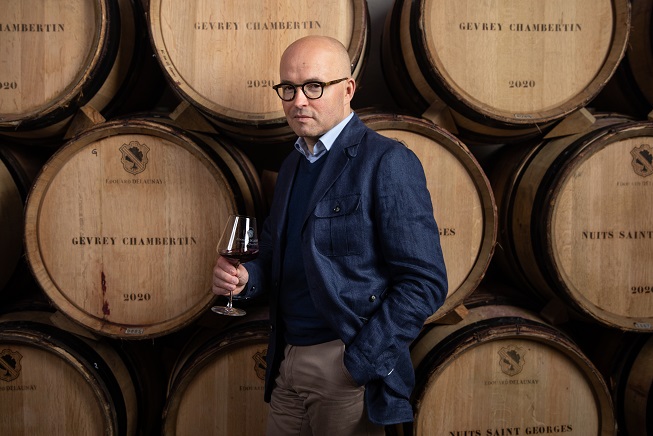
The grapes for the Charmes-Chambertin Grand Cru 2021, like most of the grapes for the Maison Edouard Delaunay portfolio, are purchased.
“We grow a little but it's very little actually – only three wines out of 35 come from vineyards we control. All the rest, we buy some grapes,” Laurent (above) informs me.
He says the grapes for the Charmes-Chambertin Grand Cru come from “a very close friend” – a friend from Laurent’s school days in Burgundy. “We have known each other for a very long time, so I know perfectly how he works in terms of viticulture.”
Laurent says these high-quality grapes are “very expensive, but we are not negotiating – I'm not trying to save a few euro because I know that I'm going to get grapes which are of absolute quality”.
However, he knows that if he gets top-quality Pinot Noir grapes and “makes the wines in the right way – a wise way – you can really produce some of the best wines in the world. And that's exactly what the fantastic awards from the IWC shows”.
'Nothing really special'I tell Laurent I’m particularly impressed because 2021 was not a standout vintage.
“No, it was considered as a little weaker compared with the other more recent vintages (especially 2019 and 2020) and so, we are particularly pleased that we achieved such results. To be honest, I was not expecting it.”
As for turning the grapes into wine, Laurent says the winemaking was “simple” and he did “nothing really special”.
He says his main consideration was “not extracting too much in a vintage where the potential is a little weaker. On the contrary, we try to accompany the wine in a very gentle way in terms of winemaking and ageing. Respect is very important. It's very important to understand the potential of your grapes coming from the terroir and the conditions of the vintage and adapt your winemaking. So, in 2021, we worked in a gentler way compared with more concentrated vintages in order to avoid any overextraction or extracting green elements. But, really, there is no special recipe.”
For Laurent, working in a gentler way means shorter macerations and élevage.
After destemming and crushing 70% of the grapes – leaving 30% as whole bunches – the must receives a short cold soak (three or four days at 13-14°C in a stainless-steel tank) before the fermentation starts spontaneously as the temperature naturally increases to 18-20°C (the temperature in the winery).
“I don't understand people who have a definitive opinion about everything and swear they will never inoculate,” Laurent comments. “For me, the most important is really to work in a way to help the wine to be at its peak when we bottle it.
'The most important is really to work in a way to help the wine to be at its peak when we bottle it'“I see winemaking as a kind of road and the destination is the day of bottling. Until the day before bottling, we can still adapt, we can still adjust a few details in order to have our wine express the best and the most of what it can be.”
He didn’t add yeasts for the Charmes-Chambertin Grand Cru 2021, but he’s not against adding a small quantity if the fermentation takes too long to start or there has been a heavy downpour prior to picking.
The fermentation (and maceration) usually lasts 17-21 days. In 2021, it was 18 days.
Laurent lets the fermentation temperature increase to 24-25°C in the early stages and likes to see it go up naturally to 30-32°C for the finale.
“We try to keep the temperature at a high level for 3-5 days at the end of the fermentation,” he says. “It’s very important, especially in slightly weaker years, because that's really when you get some very soft components. You get all the silkiness and the velvet impression in the mouth.
“We taste it about twice a day (at this crucial stage) – until we feel a little bit of tannin extraction, and then we press.”
The pressed wine goes into a separate barrique for ageing and possible blending. “Normally, we use it,” Laurent says.
'It's very important for each of my wines to have precisely the mix of barrels'The rest of the wine goes into a mixture of 228L barrels. Laurent says they work with nine coopers as he wants “exactly the right one for each of our wines”.
He believes the way coopers work is “almost as important, sometimes more important than the forest of origin and the level of toasting”.
He says in blind tastings of his wines he can identify the barrel-maker: “We can recognise the barrel from François Frères and the barrel from Taransaud and so on. They have different tastes and different profiles. And so, it's very important for each of my wines to have precisely the mix of barrels.”

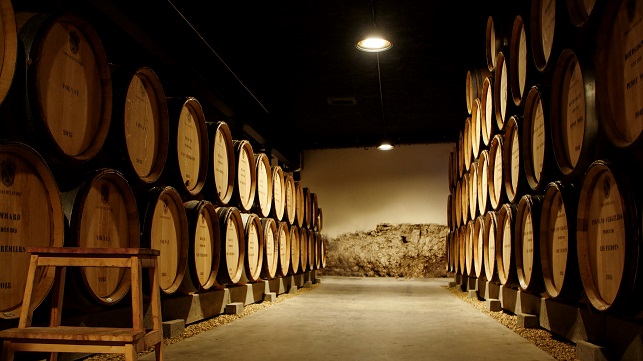
MLF occurs naturally in the barrels sometime between autumn and spring. “It happens when it happens,” is Laurent’s attitude. The two barrel-ageing cellars (above), however, are “pretty cold” (about 14°C) but malolactic conversion usually finishes by March or April. “For us, it's a totally natural process for red wines. It never happened for us to have any kind of problems with malolactic fermentations. On the other hand, it really happened that we decided for some white wines to keep a proportion with no malolactic to keep a little more freshness and acidity.”
'We had shorter barrel-ageing in 2021'The end of MLF signals the end of fortnightly bâtonnage. The wines are then left to rest. The ageing time in oak for the Charmes-Chambertin Grand Cru 2021 was 18 months – slightly less than the 22-23 months of warmer vintages. “We had shorter barrel-ageing in 2021,” Laurent explains, “because it was a lighter, more delicate year. The most important for us in ’21 for red wines was to try to keep some fruit expression.”
I ask Laurent, given the success of the Charmes-Chambertin Grand Cru 2021, if the more delicate extraction and shorter ageing time in oak to get a more delicate wine is the way forward or if it was purely a technique used for this weaker vintage?
“I would say both,” he replies. “We knew that we were going to get less concentration than normal. So, the most important for us was to try to find a kind of balance. And this balance, we understood very quickly, had to be on the nice fruit expression – especially on the nose – and on the more silky and velvety expression in the mouth.”
He says in warmer, sunnier vintages, it would be easy to have overripe grapes and overextraction.
'Now we have totally changed'“In the 80s, when I started, we were doing shorter macerations, like eight to 10 days. But we were doing a lot of extraction, a lot of pigéage (punchdowns) and so on. We were afraid of keeping our grapes too long in the tanks, but I don't know why. We had not really understood that heating or letting the temperature go up at the end of the maceration was interesting. And we were trying to extract as much as we could. Now we have totally changed: we keep longer; we work more with the temperature; but we do much less pigéage. We are less interventionist during the maceration.
“As far as we're concerned, for instance, we don't do pigéage at the beginning because we don't want to damage the berries or extract any green components from the stems. We just do a couple of gentle pumpovers and then some pigéage at the end of the fermentation – when the must is much more supple, almost like a soup.”
After ageing, the wines are blended. The blending can comprise three to six two-hour sessions over several months. Laurent points out that not all the wines are ready at the same time, so they start to build a blend by racking the most suitable components into a stainless-steel tank with a high-quality floating lid.
“We taste all of them, of course, individually, and we try to start working out our final blend. If I have 10 barrels of the wine, nothing says that my final blend is going to be 10%, 10%, 10%, 10%... Very often, we remove some of the barrels because we think that they don't go perfectly in the final blend and very often, as well, we don't use the full barrels. It already happened to put just 36L from a barrel which was 228L in the final blend because 37 was too much and the style of the wine was changing.”
After blending, the red wines are gently filtered using a lenticular filter. Laurent comments: “I know a lot of people are very proud of saying we don't filter but I find that my wines are brighter and more expressive and cleaner after a gentle filtration than doing nothing.”
‘I find that my wines are brighter and more expressive and cleaner after a gentle filtration’The red wines are bottled with total sulphites below 50mg/L and free sulphur of about 20mg/L. The first addition of SO2 comes after MLF and it’s adjusted before bottling.
Laurent tells me: “I noticed that we improved the flavour and the fruit intensity by working without any sulphites during fermentation. We have wines which are more expressive. But, on the other hand – especially for long-ageing wines – it's very important for me to keep a little sulphur addition for consistency reasons. I made some experiments, and I tried also some wines from friends who don’t use any sulphites, and to be honest, I make some whites without any sulphites in the Languedoc, but my main problem is that you have some differences between one bottle and the other.
“And I think that when you propose some wines which are going to sell for several hundred euros a bottle, which is the case of our Charmes-Chambertin, you have to respect the consumer. If you buy a case of wines, and if you have some differences and lack of consistency between one bottle and the other, I think it's not a way of respecting the consumer. At that price, consumers deserve to have some consistency and the highest possible quality. And so that's the reason why we use a little of sulphites.”
Attention to detail
The attention to detail behind the Charmes-Chambertin Grand Cru 2021 helps to set the wine apart and is key to Maison Edouard Delaunay’s meteoric rise since Laurent and Catherine reacquired the brand.“The first thing is that we are very demanding in the way we're working. Our goal is to produce exceptional wines, so it requires a lot of attention to detail,” Laurent explains before touching on the history of Maison Edouard Delaunay, which was founded in 1893.
“It was sold by my father in 1993 and I bought it back in 2017 from the people to whom my father sold it (Jean-Charles Boisset),” Laurent says. “I relaunched it almost from scratch. It was very important for me to come back and to reappear as quickly as possible in the elite of Burgundy. My goal was very high in terms of quality. So, in order really to make top-quality wines, you have to be very demanding. You have to pay attention to every detail. You have to be ready to make all the investments and to pay everything at the right level, which is going to allow you to get the quality level you want. I mean, it's very important not to make any false savings on details. You have to be ready to pay the price that is necessary.”
'Two days can really make a difference in terms of quality'Regarding the details, the first he mentions is the picking date. “This is something that has totally changed in the last 40 years. It was not that important in the 70s or 80s because the climate was not the same, the weather was not the same. The challenge then in Burgundy was to wait as long as possible, because even if you were harvesting at the end of September or sometimes early October, the grapes were never ripe enough. Never.
“It has totally changed now.”
Before returning to Burgundy, Laurent and Catherine set up Badet Clément in the Languedoc in 1995. Laurent believes their experience in this warmer region has equipped them for the new conditions in Bourgogne. “Making wines in the South of France, including Pinot Noirs and Chardonnays, I have learned to really choose very precisely the harvest window. This bracket, especially with a delicate grape like Pinot Noir, is small – it's very easy to wait too long and two days can really make a difference in terms of quality. So, choosing with a lot of care, the date of harvest is absolutely key.”
Then you have to decide about inoculating or not, stem inclusion or not or what percentage, the length of the maceration, how you're going to control the temperature of the fermentation, if you're going to use pigéage or a more gentle infusion… “It’s the details which make the difference,” Laurent observes.
Understanding the terroir
The third key to unlocking great wines, according to Laurent, is “a very deep knowledge of the terroirs and what you have to do in order to express the best of the potential coming from the terroir”.Laurent explains: “Every wine is different, especially when it comes to a region like Burgundy. And the main difference comes from the terroir. So, knowledge of the terroir is vital. This really comes from a lot of wine tastings – not only our own wines, but wines from our neighbours or friends and colleagues. As far as we're concerned at Edouard Delaunay, we spend hours and hours and hours in wine tasting. That's something that we love to do, but that's also the way you learn. And you understand better and better the true character and the true expression of each terroir and trying to bring to each of our wines what each really needs to express the best of its potential.
“There is a comparison that I like to do. If you have several children, say three, and you quickly realise they each have their own personality and talents, you don't bring them up all the same. Because your role as a parent is to bring them what they need to become the most interesting human being. It's exactly the same for making wines – you need to understand and to bring each of your wines what they need at the right time. And they don't need the same as the other wines and the neighbour appellations because the conditions in which they were born – the terroir, the situation of the vineyard, the vintage – are not the same.”
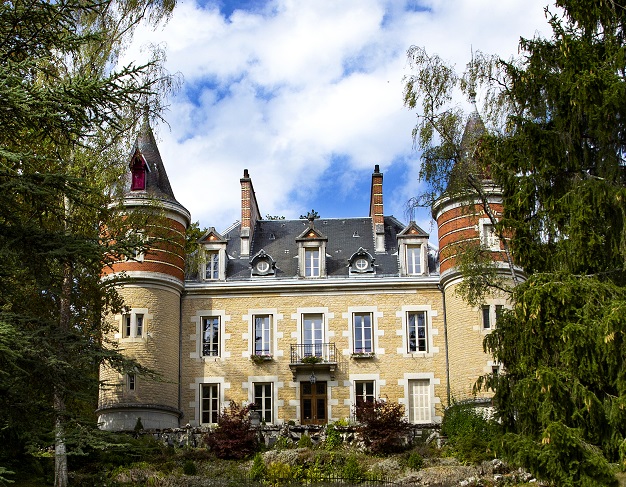
As well as the Champion Red Wine and Winemaker of the Year awards, Maison Edouard Delaunay collected seven trophies, eight gold, 15 silver and three bronze medals at IWC 2024.
Edouard Delaunay is part of the Delaunay Vins et Domaines group, with Catherine now running Badet Clément, daughter Jeanne in charge at Abbotts & Delaunay, and Laurent running the Burgundy operation from his grandparents’ 19th-century château (above) in the Hautes-Côtes area.

 English
English French
French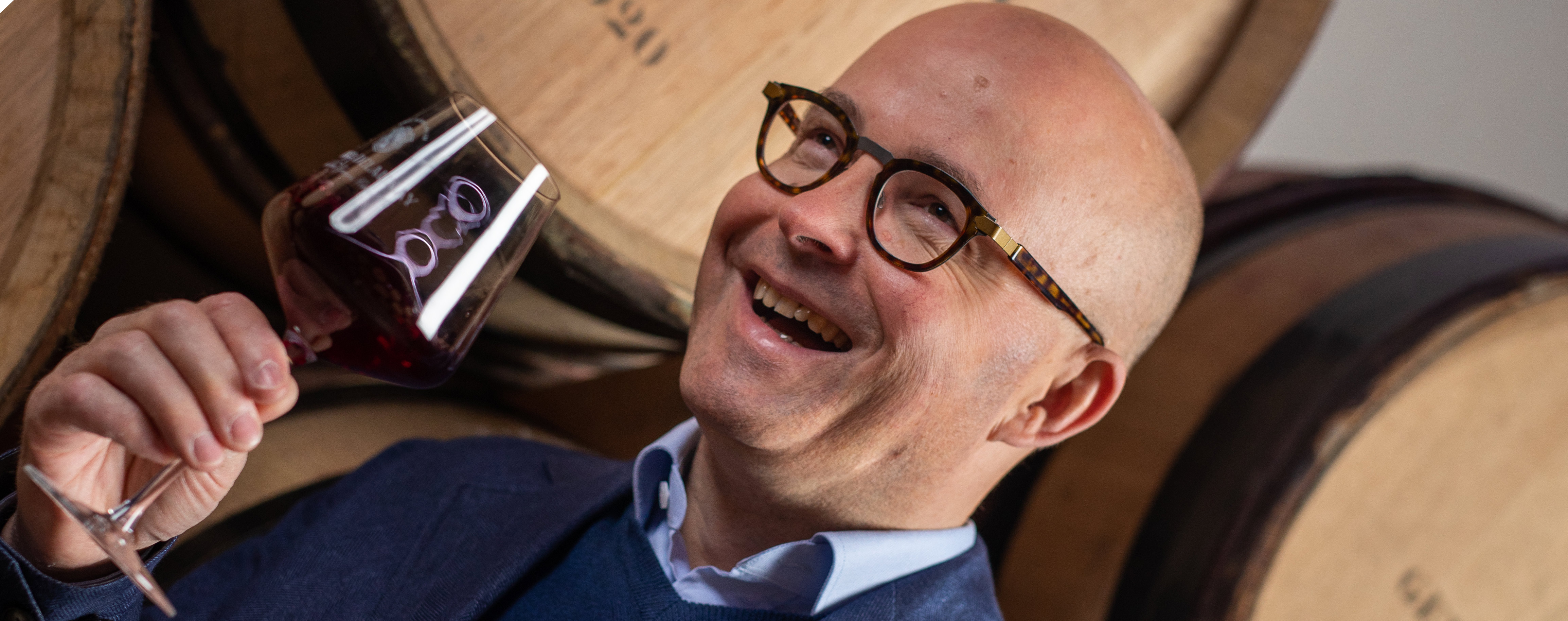



.png)
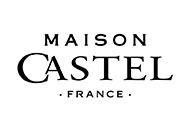
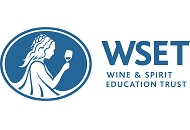
.png)



